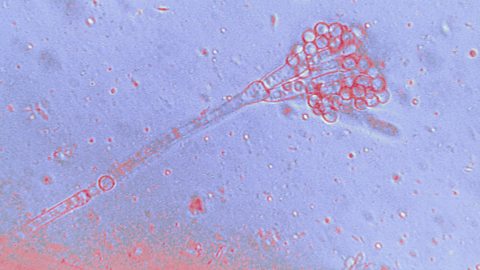Antibiotics
antibioticSubstance that controls the spread of bacteria in the body by killing them or stopping them reproducing. are substances that slow down or stop the growth of bacteriaSingle-celled microorganisms, some of which are pathogenic in humans, animals and plants. Singular is bacterium.. They are commonly prescribed medicines, examples include penicillin and amoxicillin. These can be taken to cure the diseaseIllness affecting plants and animals. by killing the pathogenMicroorganism that causes disease., but only cure bacterial diseases and not viral ones.

Penicillin
Penicillin was the first antibiotic discovered in 1928 by Alexander Fleming. He noticed that some bacteria he had left in a Petri dishA clear glass or plastic dish, used to grow living cells from organisms so they can be studied. had been killed by the naturally occurring Penicillium mouldA type of fungus..
How do antibiotics work?
Antibiotics damage the bacterial cells by inhibiting their cellular processes, but do not damage the host cells. They have the ability to cure some bacterial diseases that would have previously killed many people. Since their introduction, they have had a large influence on the world's health and death rate.
Different bacteria cause different diseases. One antibiotic may only work against one type of bacteria, or a few types. This means that a range of different antibiotics is needed for the treatment of the whole range of bacterial diseases.
Viral diseases
Viral diseases cannot be cured by antibiotics, as they reproduce inside the host cells. It is very difficult to develop antiviral drugs, as they might damage the host cell whist killing the virus. Antiviral drugs only slow down viral development, and viruses change their antigenA protein on the surface of a substance (often a pathogen) that triggers an immune response. quickly which means new drugs have to be generated regularly.